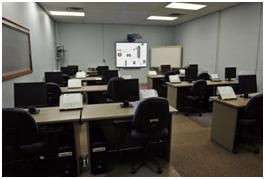
|

Posted on:
28 Jan 2013
|
Nowadays, process simulators are an essential tools for some of the courses being taught within the Chemical Engineering degree in most of the Universities and High Schools all over the world. A high percentage of the projects, especially those with a design approach, are normally conducted with the aid of a commercial or academic simulator. It is even becoming more and more common to find assignments in textbooks specifically prepared for a certain process simulation tool.
However, it seems like the “traditional” and “old-school” approach in some parts of the Chemical Engineering education is somehow unchangeable, when it comes to innovation and being updated by using computer-aided tools.
However, it seems like the “traditional” and “old-school” approach in some parts of the Chemical Engineering education is somehow unchangeable, when it comes to innovation and being updated by using computer-aided tools.

The professors Kevin D. Dahm, Robert P. Hesketh and Mariano J. Savelski at Rowan University (Glassboro, New Jersey) analyze how effective it is to include computing (particularly process simulation) in the chemical engineering curriculum in their paper “Is process simulation used effectively in ChE course?”.
Currently, some courses in chemical engineering, such as Process Dynamics and Control and Process Optimization, are computer intensive and can benefit from dynamic process simulators and other software packages.
One of the most interesting topics discussed in the paper is the real pedagogical value of these tools from different perspectives: student skills development, industry needs or future technology trends.
Perhaps the most remarkable advantages of integrating simulation tools into a course is that it enables the professor to present in an inductive manner, such that the lectures can become more intuitive and time-efficient.
However, some people, especially teachers, argue that a potential drawback of using simulators is that it is possible for students to successfully construct and use models without really understanding the physical phenomena within each unit operation. So therefore, those tools could be suitable as a pedagogical aid in lower-level course where a high understanding of the process is not required.
We fully agree with the idea of enhancing some courses by including tools that can provide an added-value to the learning process, but of course that should not mean enabling the students to solve problems with only a surface of understanding of the processes they are modelling.
In my years of teaching I have seen too many times that students just “click together” a flow sheet, fill in some parameters and press “solve”. When the program converges to a solution, the students eagerly agree with the solutions, without checking the validity of the answer (At one point in time a student confidently presented me his reactor design with a cross sectional area of 26 million square meters!… ”It was the outcome of the simulation, so it must be right”, was his defence to my serious doubts).
In my opinion there is quite a difference between simulation (by connection a set of models that were developed by someone else) and modelling (in which you think about the involved equations yourself). Students should at least have some knowledge about modelling, before they can use simulation tools efficiently.
We would be more than interested in your view on this, so please leave a comment below.
In the next blog we will cover another interesting point made by the professors from Rowan University.
———————————————–








